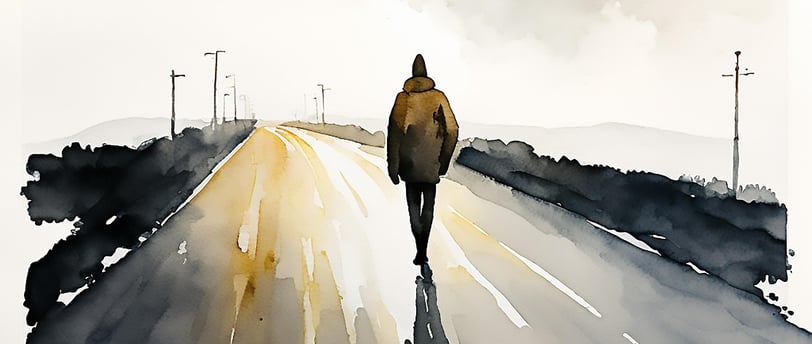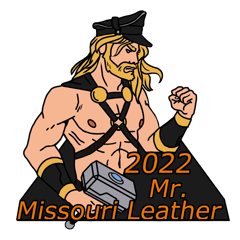The Psychological Weight of Breaking Free: Therapy and Self-Growth
A retrospective look at the journey and the struggle that the author has faced while coming to terms with upbringing and finally stepping through the shadows and into the light of acceptance and growth.
PERSONAL JOURNEY
Tighearn Draiocht
2/20/20255 min read


I grew up in a world where everything had its place, and stepping out of that place was met with condemnation. As a child in a Southern Baptist household in the Midwest, my family taught me that homosexuality was not just wrong but sinful, a deviation from God’s plan. Progressive ideas were viewed as a dangerous slippery slope to moral decay. We were told to pray for those who had "lost their way," to urge them to return to God’s light. It was a rigid framework, and for a while, I believed it all.
But deep down, something didn’t feel right.
From as early as my preteen years, I felt an internal tug-of-war. I noticed things about myself that didn’t align with what I was taught. There was a warmth I felt when I saw someone of the same sex, a spark that didn’t fit into the lessons I’d learned in Sunday school. But I buried it. I’d pray for forgiveness, asking God to make me normal. I’d repeat the verses I’d memorized, hoping they’d drown out the thoughts that made me feel like a monster. That shame settled in my chest, heavy and unrelenting.
Then came the internet.
I stumbled onto forums and websites, initially out of curiosity but eventually with purpose. I discovered a world I never knew existed: LGBTQIA+ people—vibrant, joyful, defiant. Their stories were full of struggles, yes, but also love, acceptance, and pride. I found BDSM and the leather community, people who had reclaimed their desires and turned them into artful expressions of who they were. These communities stood in stark contrast to the narrow, fear-driven beliefs I’d grown up with. They were unapologetic, beautiful in their authenticity.
For years, I consumed these stories in silence. At first, I wanted to judge them. That’s what I’d been taught to do. But the more I read, the harder it became to reconcile their lives with the doctrine I’d been raised to believe in. How could something that brought people so much joy and freedom be wrong? These were not the broken, sinful people I’d been warned about. They were whole, thriving, and filled with love.
It wasn’t until I was 24 that I finally began to crack open the door to my own truth. I was standing in a leather bar, taking in the sights of people living their truths. It was a special event called the Kinky Carnival, and while I’d been in LGBTQIA+ spaces before, this night felt different, charged with possibility. I struck up a conversation with a butch lesbian from Texas that I’ll call Carla for the sake of this story. She was rough around the edges, with a laugh that could fill the whole room. At one point, she looked me straight in the eye and said, “Kid, you don’t have to carry all that shame. It’ll break you if you let it.”
That night, for the first time, I said the words out loud: “I’m pansexual.” Carla gave me a big hug, a softness in her demeanor I hadn’t seen before. She held me tightly and said, “It’s about time. I’m proud of you, and it’s going to be okay.” As she spoke, I felt tears streaming down my face, the weight of shame lifting for the first time in my life.
But coming out to myself was only the beginning. I didn’t tell my family. I couldn’t. The fear of their rejection was too great. My parents had always emphasized the importance of family—if you conformed to their idea of what family should be. I knew that introducing them to a partner, or even just being honest about who I was, might mean losing them. So, I kept my truth hidden from them, even as I began to live it more openly elsewhere.
That decision created its own kind of shame. In queer spaces, I often felt like I didn’t belong. How could I call myself part of this community when I was still hiding such a fundamental part of myself? I’d look around at Pride events and see people who were bold and unapologetic, and I’d wonder if I deserved to stand among them. It felt like I was living two lives—one where I was free and one where I was still caged by my upbringing.
Therapy became a lifeline. It was in those sessions that I began to untangle the roots of my internalized shame. My therapist helped me see that the beliefs I’d grown up with weren’t my fault, and they didn’t have to define me. We talked about how shame thrives in silence, how it feeds on secrecy and fear. Slowly, I began to challenge the narratives I’d been taught. I started to replace them with truths that aligned with who I was becoming.
One of the hardest parts of this journey has been forgiving myself. Forgiving myself for the years I spent denying who I was. For the times I parroted harmful beliefs because I was too afraid to speak out. For the relationships I kept hidden, denying my partners the recognition they deserved. That forgiveness is still a work in progress.
I’ve also had to grapple with the weight of my family’s teachings. Even now, those lessons linger in the back of my mind. They whisper that I’m wrong, that I’ll never be enough. But I’ve learned to challenge those voices. I remind myself that the love I feel—for myself, for my partners, for my community—is not wrong. It’s real, and it’s mine.
Writing this feels like stepping into the light for the first time. It’s terrifying, but it’s also liberating. I know I’m not the only one who has felt this way. So many of us carry the weight of shame, passed down through generations or imposed by a society that refuses to see us. But we don’t have to carry it forever. We can set it down. We can choose to live in truth and love, even if it’s a hard road to walk.
As I look to the future, I feel hopeful. I’m learning to be more open, to let people see me for who I am. I’m working toward a day when I can share my whole self with my family, even if it means risking their rejection. And I’m finding strength in my community, in the people who have walked this path before me and the ones who walk it alongside me now.
If you’re reading this and you’ve felt the same shame, the same fear, I want you to know you’re not alone. Your journey is yours to take, at your own pace. But know that there’s a world out there ready to embrace you, scars and all. And there’s a lightness waiting for you on the other side of shame — a freedom that’s worth every step of the journey.


